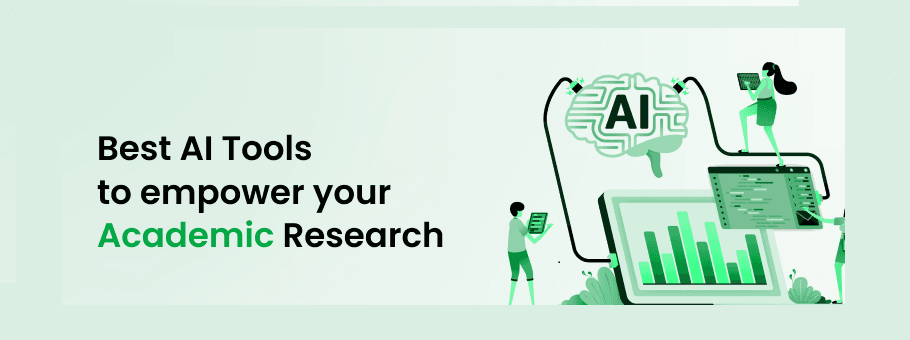

Let’s learn more about this topic below with Bottle Flip. Artificial Intelligence (AI) tools are revolutionizing the way students and creators approach research, offering unprecedented efficiency and depth of insights. These innovative solutions are transforming academic and creative workflows.
In recent years, the integration of AI tools into research and creative processes has gained significant momentum. Students and creators alike are discovering the immense potential of these technologies to streamline their work, enhance productivity, and uncover new perspectives. As the demand for efficient and effective research methods grows, AI-powered solutions are stepping up to meet the challenge. These tools offer a wide range of capabilities, from intelligent document analysis to automated data visualization, enabling users to tackle complex tasks with greater ease and accuracy. The impact of AI on research and creative endeavors is profound, transforming the way we approach knowledge acquisition and content creation.
One of the key advantages of AI tools in research is their ability to process vast amounts of information quickly and accurately. This capability is particularly valuable in fields where data-driven insights are crucial, such as scientific research, market analysis, and academic studies. By leveraging AI algorithms, researchers can identify patterns, trends, and correlations that might otherwise go unnoticed, leading to more comprehensive and nuanced understanding of their subjects. Moreover, AI-powered research assistants can help students and professionals save time on routine tasks, allowing them to focus on higher-level analysis and critical thinking.
For creators, AI tools offer a wealth of possibilities to enhance their artistic and professional output. From generating ideas and creating content to optimizing workflows and personalizing user experiences, these technologies are pushing the boundaries of what’s possible in various creative fields. AI-powered writing assistants, for instance, can help authors overcome writer’s block and refine their prose, while machine learning algorithms can assist graphic designers in generating unique visual concepts. The integration of AI into creative processes not only boosts productivity but also opens up new avenues for innovation and experimentation.
Students across all levels of education are increasingly turning to AI-powered research tools to enhance their learning experience and academic performance. These tools offer a range of features designed to streamline the research process, from finding relevant sources to synthesizing information and generating citations. One of the most significant advantages of AI research assistants is their ability to quickly scan and analyze vast databases of academic literature, helping students identify the most relevant and credible sources for their studies. This not only saves time but also ensures that students are working with high-quality, up-to-date information.
Another valuable application of AI in student research is in the realm of natural language processing. Advanced AI algorithms can help students understand complex academic texts by providing summaries, explanations of difficult concepts, and even translations for non-native speakers. This capability is particularly useful for students tackling challenging subjects or working with technical literature outside their primary field of study. By breaking down complex information into more digestible formats, AI tools enable students to grasp key concepts more quickly and efficiently.
AI-powered research tools also excel in data analysis and visualization, offering students powerful ways to interpret and present their findings. These tools can automatically generate charts, graphs, and other visual representations of data, making it easier for students to identify trends and communicate their results effectively. Additionally, some AI research assistants can provide personalized recommendations for further reading or research directions based on a student’s interests and previous work, helping to guide their academic exploration and foster a deeper understanding of their chosen subjects.
One area where AI tools have made significant strides in supporting students is in academic writing. Advanced natural language processing algorithms can now assist students in improving their writing style, grammar, and overall coherence. These AI-powered writing assistants can offer real-time suggestions for sentence structure, word choice, and even citation formatting, helping students produce higher-quality academic papers. Some tools go beyond basic proofreading, offering insights into the logical flow of arguments and suggesting ways to strengthen the overall structure of an essay or research paper.
Moreover, AI writing tools can help students overcome common challenges in academic writing, such as maintaining consistency in tone and avoiding plagiarism. By analyzing the context and intent of a student’s writing, these tools can suggest appropriate academic vocabulary and phrasing, ensuring that the final product meets the standards of scholarly communication. Additionally, advanced plagiarism detection algorithms powered by AI can help students identify and correct unintentional instances of copying, promoting academic integrity and originality in their work.
Content creators across various disciplines are increasingly harnessing the power of AI to enhance their creative processes and streamline their workflows. From writers and graphic designers to video editors and musicians, AI tools are offering new ways to generate ideas, create content, and optimize production. One of the most significant advantages of AI for creators is its ability to provide inspiration and overcome creative blocks. By analyzing vast amounts of existing content and identifying patterns and trends, AI algorithms can generate unique ideas and concepts that serve as starting points for original creations.
In the realm of writing, AI-powered tools are revolutionizing the way content is produced. Advanced language models can now generate human-like text on a wide range of topics, helping writers create first drafts, develop outlines, and even craft entire articles or stories. While these tools are not intended to replace human creativity, they serve as powerful assistants that can help writers overcome writer’s block, explore new angles, and increase their productivity. Some AI writing tools can also adapt to a writer’s unique style and voice, ensuring that the generated content aligns with their personal brand or creative vision.
For visual artists and graphic designers, AI tools offer exciting possibilities in image generation, style transfer, and design optimization. Machine learning algorithms can now create original images based on text descriptions, transform existing images into different artistic styles, and even generate entire design layouts. These capabilities not only save time but also push the boundaries of what’s possible in visual creation. AI-powered design tools can also analyze user engagement and preferences, helping creators optimize their visual content for maximum impact and appeal.
The impact of AI on video and audio production has been equally transformative. Video editors can now leverage AI algorithms to automate time-consuming tasks such as color correction, scene detection, and even basic editing decisions. Some AI tools can analyze the content of a video and automatically generate highlights or trailers, saving creators significant time in post-production. In the audio realm, AI is being used to enhance sound quality, generate background music, and even create realistic voice-overs using text-to-speech technology.
Musicians and composers are also benefiting from AI tools that can generate melodies, harmonies, and even entire compositions based on specified parameters or styles. These tools serve as creative collaborators, offering new ideas and inspirations that musicians can build upon. Additionally, AI-powered music production software can assist in mixing and mastering tracks, providing professional-quality results even for independent artists working with limited resources.
As AI tools become increasingly integrated into research and creative processes, it’s crucial to consider the ethical implications of their use. One of the primary concerns is the potential for over-reliance on AI, which could lead to a decrease in critical thinking skills and original thought. Students and creators must strike a balance between leveraging AI’s capabilities and maintaining their own intellectual and creative autonomy. It’s essential to view AI tools as assistants rather than replacements for human intelligence and creativity.
Another important consideration is the issue of bias in AI algorithms. As these tools are trained on existing data, they may inadvertently perpetuate existing biases or stereotypes present in that data. Researchers and creators must be aware of this potential and critically evaluate the outputs of AI tools, ensuring that their work remains fair, inclusive, and accurate. Transparency in AI algorithms and ongoing efforts to address bias in training data are crucial steps in mitigating these concerns.
Looking to the future, the role of AI in research and creative processes is likely to expand further. As natural language processing and machine learning technologies continue to advance, we can expect even more sophisticated tools that can engage in complex reasoning, generate more nuanced content, and provide deeper insights. The integration of AI with other emerging technologies, such as virtual and augmented reality, may open up entirely new possibilities for research and creative expression.
However, as AI tools become more powerful, it will be increasingly important to develop ethical guidelines and best practices for their use in academic and creative contexts. This includes addressing issues of authorship and attribution when AI-generated content is used, ensuring transparency about the role of AI in research and creative works, and developing AI literacy programs to help users understand the capabilities and limitations of these tools.
In conclusion, AI tools are revolutionizing the way students and creators approach research and content creation, offering unprecedented efficiency and insights. From streamlining academic research to unleashing new creative possibilities, these technologies are transforming workflows across various disciplines.